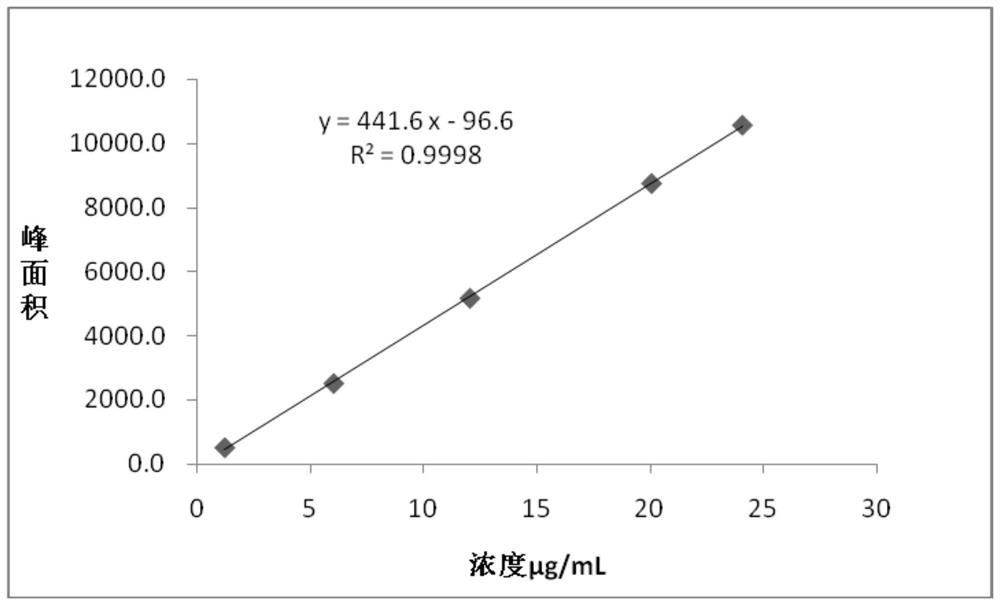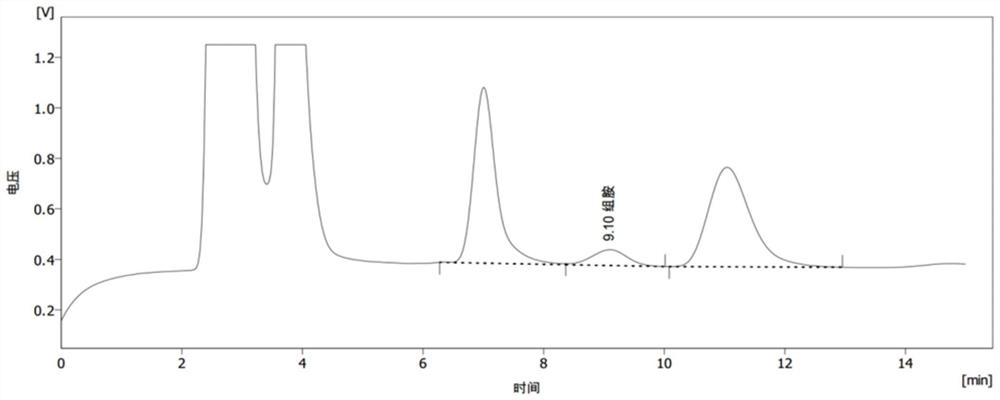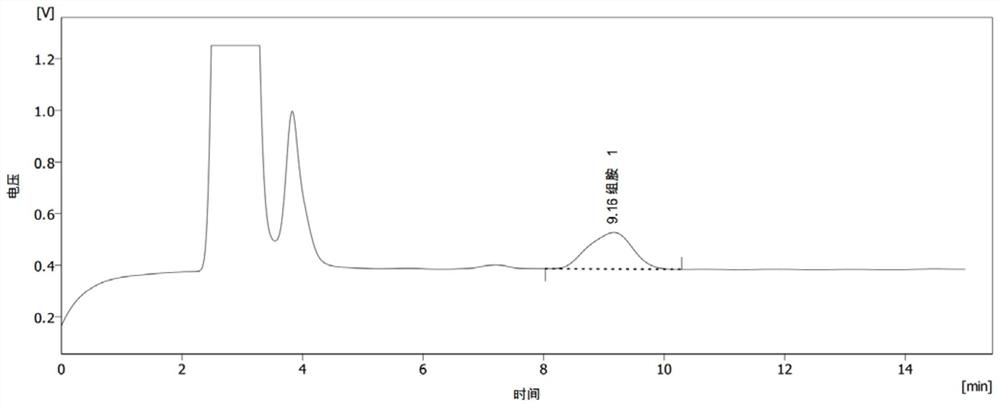Method for detecting histamine content in fish meal
A technology for histamine and content, applied in the field of analytical chemistry, can solve the problems of cumbersome and time-consuming pretreatment operations, difficult to control the derivatization process, and unstable derivatives.
- Summary
- Abstract
- Description
- Claims
- Application Information
AI Technical Summary
Problems solved by technology
Method used
Image
Examples
Embodiment 1
[0064] To detect the histamine content in the fishmeal sample, the steps are as follows:
[0065] (1) Weigh 996.62mg of fishmeal sample, put it in a 25mL brown volumetric flask, add 10mL of 0.25% sulfosalicylic acid solution, shake gently, the solution will completely soak the sample, continue to add 0.25% sulfosalicylic acid solution Dilute the salicylic acid solution to 25mL, ultrasonically extract for 10min, shake well every 5min in the middle, after the ultrasonication is completed, take it out and let it cool down to room temperature. Take 10 mL of the supernatant and pour it into a 50 mL centrifuge tube, centrifuge at 8000 r / min for 10 min in a centrifuge, and pass the centrifuged supernatant through a 0.22 μm microporous membrane for analysis by an automatic amino acid analyzer.
[0066] (2) Amino acid automatic analyzer determination. The chromatographic conditions are: chromatographic column: cationic separation column, 30mm×4.6mm; mobile phase: buffer A+buffer B (30...
Embodiment 2
[0069] To detect the histamine content in the fishmeal sample, the steps are as follows:
[0070] (1) Weigh 978.02mg of fishmeal sample, put it in a 25mL brown volumetric flask, add 10mL of 3% sulfosalicylic acid solution, shake gently, the solution will completely wet the sample, continue to add 3% sulfosalicylic acid solution Dilute the syringic acid solution to 25mL, ultrasonically extract for 45min, and shake well every 5min in between. After the ultrasonication is completed, take it out and let it cool down to room temperature. Take 10 mL of the supernatant and pour it into a 50 mL centrifuge tube, centrifuge at 8000 r / min for 10 min in a centrifuge, and pass the centrifuged supernatant through a 0.22 μm microporous membrane for analysis by an automatic amino acid analyzer.
[0071] (2) Amino acid automatic analyzer determination. Chromatographic conditions: chromatographic column: cation separation column, 30mm×4.6mm; mobile phase: buffer A+buffer B (30:70), the pH valu...
Embodiment 3
[0074] To detect the histamine content in the fishmeal sample, the steps are as follows:
[0075] (1) Weigh 970.47mg of fishmeal sample, put it in a 25mL brown volumetric flask, add 10mL of 1% sulfosalicylic acid solution, shake gently, the solution will completely wet the sample, continue to add 1% sulfosalicylic acid solution Dilute the syringic acid solution to 25mL, ultrasonically extract for 30min, and shake well every 5min in the middle, after the ultrasonication is completed, take it out and let it cool down to room temperature. Take 10 mL of the supernatant and pour it into a 50 mL centrifuge tube, and centrifuge at 8000 r / min for 10 min in a centrifuge. After centrifugation, the supernatant was passed through a 0.22 μm microporous membrane for analysis by an automatic amino acid analyzer.
[0076] (2) Amino acid automatic analyzer determination. Chromatographic conditions: chromatographic column: cation separation column, 30mm×4.6mm; mobile phase: buffer A+buffer B ...
PUM
 Login to View More
Login to View More Abstract
Description
Claims
Application Information
 Login to View More
Login to View More - R&D
- Intellectual Property
- Life Sciences
- Materials
- Tech Scout
- Unparalleled Data Quality
- Higher Quality Content
- 60% Fewer Hallucinations
Browse by: Latest US Patents, China's latest patents, Technical Efficacy Thesaurus, Application Domain, Technology Topic, Popular Technical Reports.
© 2025 PatSnap. All rights reserved.Legal|Privacy policy|Modern Slavery Act Transparency Statement|Sitemap|About US| Contact US: help@patsnap.com



